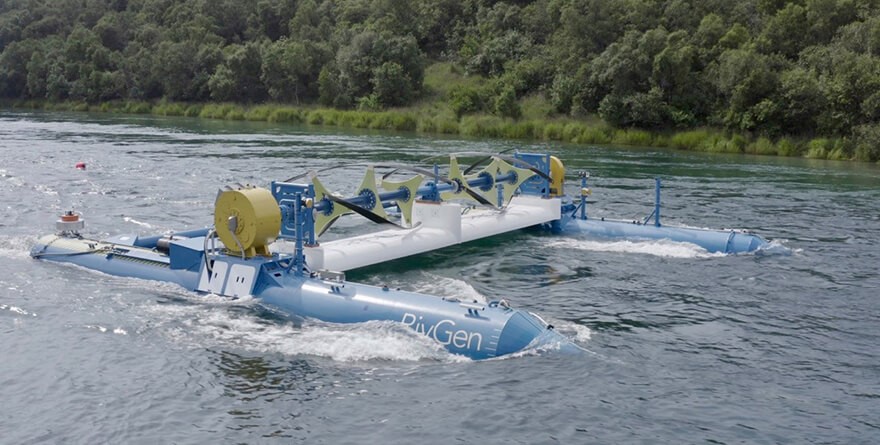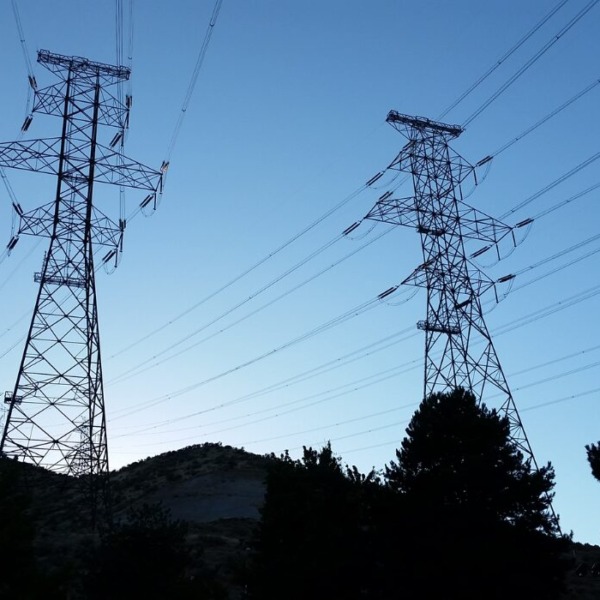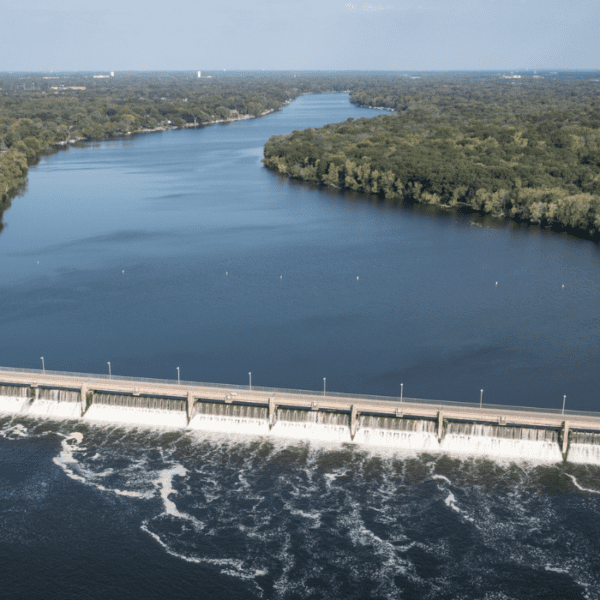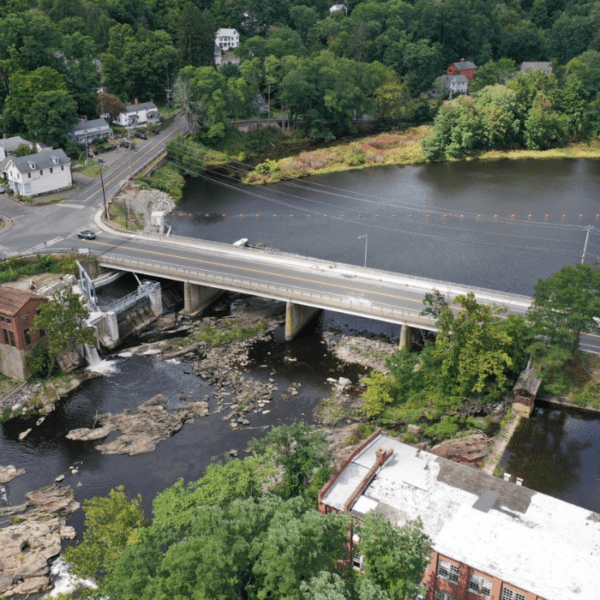The National Hydropower Association had the opportunity to visit the state of Alaska in August 2021. Waterpower – in multiple forms — is an important contributor in the state.
In this article, we provide a glimpse of the impressive work occurring in the state, including building several new hydro projects, coupling batteries and hydropower to set up microgrids, and partnering with remote villages to provide clean, renewable electricity to the people.
New Hydro Project Development Underway
In Alaska, there is abundant opportunity to build more new hydro projects. The following four examples provide a sampling of development activity underway.
Sweetheart Lake
Sweetheart Lake is located within the City and Borough of Juneau, approximately 33 miles south of downtown Juneau on the east shore of Gilbert Bay. The lake drains into Gilbert Bay (an arm of Port Snettisham) via Sweetheart Creek.
Using this water resource, Juneau Hydropower has a 50-year Federal Energy Regulatory Commission (FERC) license to construct and operate the 19.8-MW Sweetheart Lake Hydroelectric Facility. The facility is expected to generate an average of 116,000 megawatt-hours (MWh) of electricity annually.
Once completed, the facility will provide a 25% increase over Juneau’s current electrical generation.
Construction is slated to begin soon. Duff Mitchell, managing director of Juneau Hydropower Inc., says the progress to date on this proposed project represents the culmination of over seven years of research, planning, and design in the Federal Energy Regulatory Commission (FERC) application and approval process.
Thayer Creek
Angoon, Alaska, on Admiralty Island and in the Kootznoowoo Wilderness, has a population of 450 and is represented by Kootznoowoo, Incorporated. Residents pay up to five times more for electricity than the national average.
Kootznoowoo and Angoon agreed to forgo the economic benefits of logging in order to allow Admiralty Island to be declared a national monument. In exchange, Kootznoowoo was granted exclusive rights to develop hydroelectric resources at Thayer Creek.
In building the project, Kootznoowoo aims to be more self-sustaining, stabilize rates, and reduce dependence on the Power Cost Equalization Program (PCE), a program providing economic assistance to communities and residents of rural electric utilities where the cost of electricity can be three to five times higher than for customers in more urban areas of the state.
Thayer Creek is currently in the final stages of planning and permitting with a run-of-river design featuring concrete a diversion structure, an 850-kW turbine-generator, and a 12.- kV overhead transmission line with an annual generation of 5,000 to 5,500 MWh.
An application for the Special Use Permit will be submitted to the U.S. Forest Service sometime in 2021.
The company is currently working through the financial challenges of funding the project, much in part due to its location. Once complete, the project could virtually replace all diesel generation needed in Angoon with heating loads supplied through heat pumps.
Grant Lake
Homer Electric Association, through its subsidiary Kenai Hydro LLC, continues development of the 5-MW Grant Lake Hydroelectric Project near Moose Pass on the Kenai Peninsula. The project will be located on Grant Lake and Grant Creek, near the community of Moose Pass with an expected generating capacity of about 18,600 MWh of electricity annually.
FERC issued Kenai Hydro an original license for the Grant Lake Hydroelectric Project in August of 2019.
The Grant Lake Project will divert water from Grant Lake through a 3,300 foot-long tunnel and deliver the flow to a powerhouse located near the outlet of a natural incised-rock canyon on Grant Creek.
With the extension of time request approval from FERC issued in July of 2020, Homer Electric has earmarked the start of construction for April 2023 with an estimated completion in December of 2024.
Nuyakuk River
Given the current trajectory of their licensing process, Nushagak Cooperative estimates it will receive its original license from FERC in 2025 for its Nuyakuk River Hydroelectric Project. The proposed run-of-river project would generate year-round and produce up to 12 MW of electricity, depending on the season, corresponding demand and associated river flow.
Electricity and optical fiber would be provided, via new transmission, to the communities of Dillingham, Aleknegik, Koliganek, New Stuyahok, Ekwok and Levelock, while also supporting the electric and communications needs of Bristol Bay’s incredible wild salmon industry in these communities in a much more efficient and cost-effective manner.
The project, estimated to produce 58,200 MWh of electricity a year, is projected to nearly eliminate the region’s current reliance on diesel through the majority of the year.
Innovative Uses of Energy Storage Systems
Two Alaskan hydro asset owners are currently in the process of implementing an energy storage device or considering integrating energy storage within their portfolios.
In 2017, Cordova Electric Cooperative (CEC) received the support and sponsorship of Dr. Imre Gyuk of the U.S. Department of Energy’s energy storage program to implement a microgrid battery energy storage application. CEC worked with DOE and several other partners including Sandia National Laboratory, the National Rural Electric Cooperative Association (NRECA), and the Alaska Center for Energy and Power to unlock hydropower potential and sharply reduce the use of diesel fuel to power the system.
CEC is currently looking at several hydropower storage project options that will complement any future hydropower development. Those projects will demonstrate how to modernize local Alaskan microgrids by storing excess energy. The project will essentially balance a microgrid environment, eliminating reliability on diesel. CEC estimates an annual savings of $200,000 by incorporating a battery energy storage system within its portfolio.
Clay Koplin, CEO of CEC, stated, “the pairing of an energy storage system and hydropower will improve the energy efficiency and security of the people of Cordova.”
Homer Electric recently installed a 93-MWh Battery Energy Storage Systems (BESS) energy system at the Soldotna Generation and Substation Facility. The 37-battery unit system features a 46.5-MW per hour delivery rate. BESS are devices that enable energy from renewables to be stored and then released when customers need power most.
According to Bob Day, Manager of Bradley Lake Hydro, at Homer Electric, BESS will help Homer meet reliability requirements while reducing the amount of fossil fuel used and provide system stability. You can view the time lapse video of the July installation here.
Technology Development and Remote Communities
Nestled in the Lake and Peninsula Borough in Alaska sits the Village of Igiugig. For the past seven years, the Village has worked with the technology developer ORPC to install a hydrokinetic device in the Kvichak River, which runs in the northern area of the village.
The device, called RivGen, has the distinction of being the longest operating hydrokinetic device in the United States. The first iteration of the device was installed in 2014. In 2021, ORPC is installing an upgraded device, smart microgrid and energy storage. ORPC estimates the village will be able to reduce its diesel usage by 90% with these three installations, creating clean baseload power for the community.
This project demonstrates the opportunities available to Alaskan communities in utilizing marine energy devices.
ORPC and the community of Igiugig have worked closely together and demonstrated the positive impact collaboration and community involvement can have in project development within remote communities.
Sustainable, Off Grid Energy for Communities from Free Flowing Rivers
Throughout Alaska, there are additional instream and coastal sites that can be developed.
A 2021 report by the National Renewable Energy Laboratory (NREL) detailing marine energy resource potential in the U.S. states that Alaska has a tidal resource potential of 210 TWh/yr, with the top two tidal sources in close proximity to Anchorage and Juneau, Cook Inlet and Chatham Straight.
Alaska’s river hydrokinetic resource of 21 TWh/yr is equivalent to powering 1.9 million homes.












